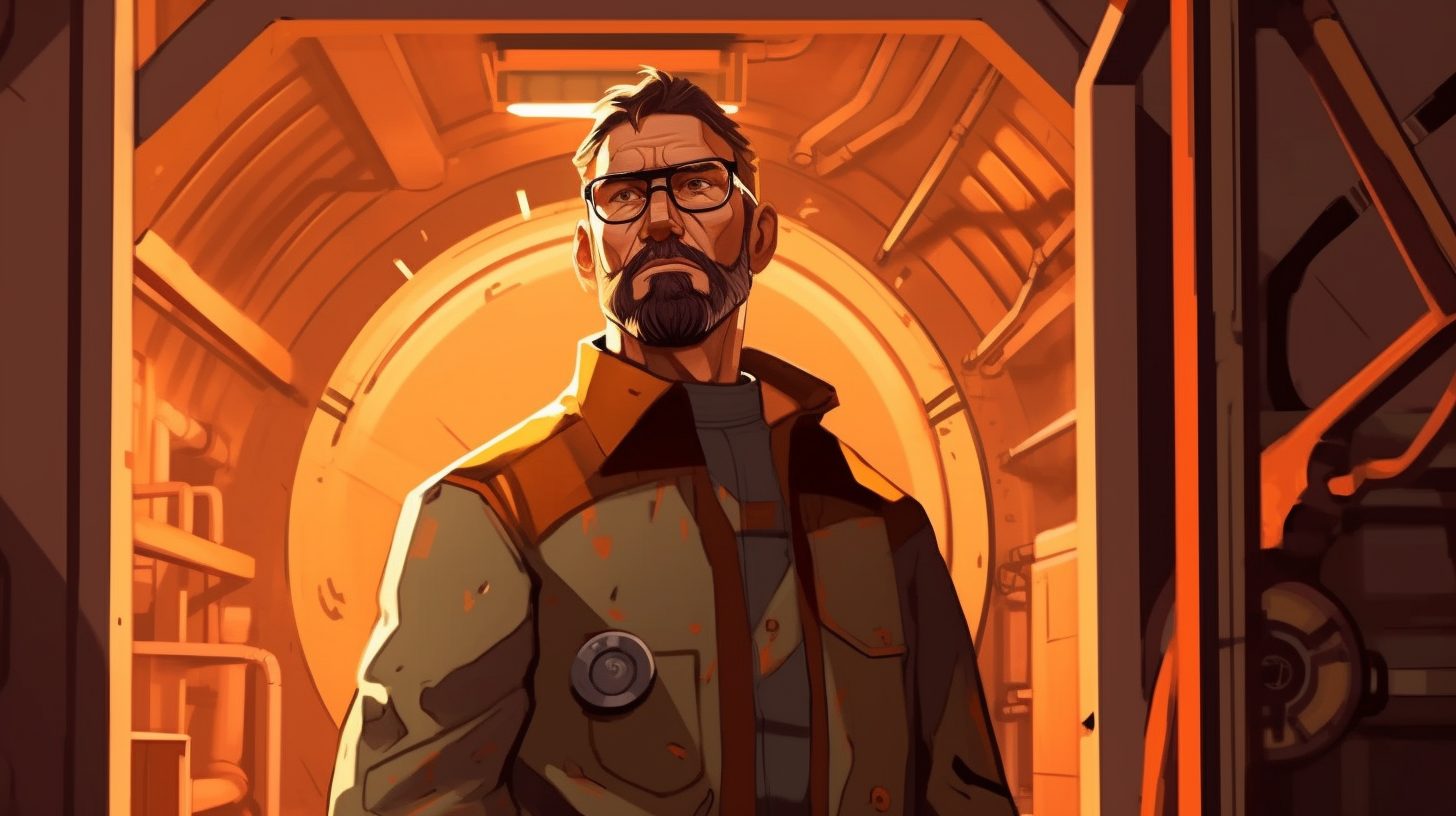Introduction
Half-Life, a game released in 1998 by Valve Corporation, is often regarded as one of the most influential video games of all time. By introducing a groundbreaking story, immersive gameplay, and advanced game mechanics, Half-Life set the stage for the future of gaming. This in-depth article will explore how this legendary game reshaped the video game industry and set a new standard for developers everywhere.
The Birth of Half-Life
Half-Life was created by a group of talented individuals led by Gabe Newell and Mike Harrington, two former Microsoft employees. They formed Valve Corporation in 1996 and set out to develop a game that would redefine the first-person shooter (FPS) genre. Utilizing a modified version of the Quake engine, they created a game that would eventually become Half-Life.
Half-Life was released on November 19, 1998, and quickly gained recognition for its unique approach to storytelling, immersive gameplay, and innovative mechanics. It went on to sell over 9 million copies and win numerous “Game of the Year” awards.
Breaking the Mold: Storytelling
Half-Life tells the story of Gordon Freeman, a theoretical physicist working at the Black Mesa Research Facility. When a disastrous experiment opens a portal to another dimension, Gordon must navigate the ensuing chaos and fight off both alien creatures and government forces to save the day.
What set Half-Life apart from other games at the time was its approach to storytelling. Instead of relying on cutscenes or dialogue boxes, the game used scripted sequences and environmental cues to immerse players in the narrative. This innovative technique, known as in-game storytelling, allowed players to experience the story firsthand without interrupting gameplay. As a result, players became more invested in the game world and its characters.
Advanced Game Mechanics
Half-Life introduced several advanced game mechanics that would later become staples of the FPS genre:
- Seamless Level Design: Instead of using level-based progression, the game featured a continuous world with no loading screens or breaks in gameplay. This made the game feel more realistic and immersive.
- Varied Enemy AI: Enemies in Half-Life displayed intelligent behavior, such as flanking, retreating, and coordinating with other enemies. This made combat more challenging and engaging for players.
- Physics-Based Puzzles: The game integrated physics-based puzzles throughout its levels, requiring players to think strategically and interact with their environment to progress. This added depth and variety to the gameplay.
- Weapon Variety: Half-Life offered players a diverse arsenal of weapons, each with its own unique characteristics and mechanics. This allowed players to experiment with different strategies and playstyles.
Immersive Game World
Half-Life’s immersive game world contributed greatly to its success. The game’s environments were richly detailed, with realistic lighting,
textures, and sound design. This attention to detail created a believable world in that players could easily lose themselves. Moreover, the game’s environments were highly interactive, allowing players to interact with objects, solve puzzles, and uncover hidden secrets.
The game’s sound design played a crucial role in building the immersive atmosphere. Half-Life’s score, composed by Kelly Bailey, combined ambient music, industrial sounds, and suspenseful tracks to create a unique and memorable soundtrack. Additionally, the game’s sound effects were carefully crafted to add depth and realism to the game world. From the echoing footsteps in the facility’s corridors to the distinct sounds of each weapon, Half-Life’s audio brought the game to life.
The game’s memorable characters also contributed to the immersive experience. From the mysterious G-Man to the friendly security guard Barney, each character had a unique personality and played a role in the story. The use of scripted sequences allowed players to witness key events and interactions between characters, further connecting them to the game world.
Legacy and Influence on Gaming
Half-Life’s impact on the video game industry cannot be overstated. The game’s innovative storytelling, game mechanics, and immersive world have influenced countless games and developers. Some of the most notable examples include:
- Sequels and Spin-Offs: Half-Life spawned a successful franchise, with sequels like Half-Life 2 and its episodic follow-ups, as well as spin-offs like Blue Shift and Opposing Force. These games built upon the foundation laid by the original Half-Life and introduced new mechanics and storytelling techniques.
- The Creation of Steam: Valve Corporation, the company behind Half-Life, went on to create Steam, the largest digital distribution platform for PC games. Steam has revolutionized the way we buy and play games, making it easier for developers to distribute their games and for players to access them.
- The Modding Community: Half-Life’s modding community has been instrumental in shaping the future of gaming. Popular mods like Counter-Strike and Team Fortress started as fan-made modifications of Half-Life and went on to become successful standalone games. The thriving modding community continues to create new content and experiences for players to enjoy.
- Influence on Other Games: Half-Life’s innovative approach to storytelling and game mechanics can be seen in many modern games, including the BioShock series, Portal, and the Deus Ex series. These games have built upon the foundations laid by Half-Life and continue to push the boundaries of interactive storytelling and immersive gameplay.
Half-Life’s Industry Impact
Half-Life revolutionized the video game industry with its groundbreaking storytelling, advanced game mechanics, and immersive game world. Its influence can still be felt today, as developers continue to build upon the foundations it laid. As we look back on the game’s legacy, it is clear that Half-Life has left an indelible mark on the history of gaming and will continue to inspire future generations of game developers and players alike.





